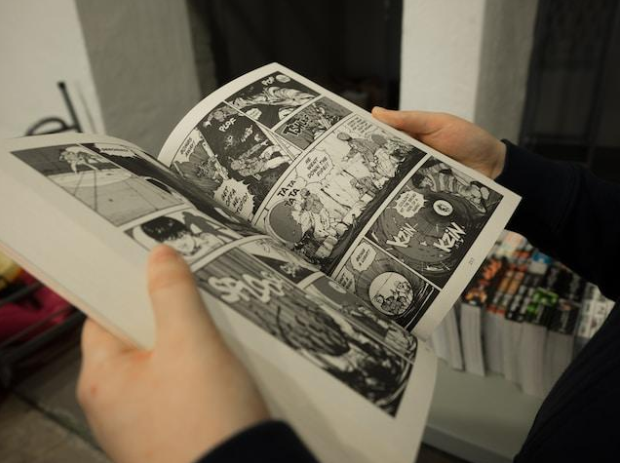Source: https://unsplash.com/photos/nUL9aPgGvgM
the one piece Pop collection https://funko.com/pop-one-piece-4-pack/69107.html
The popular manga has a profound influence, with many becoming books, TV shows, anime, collectible figures, and even video games. Whether you want to read about serial killers, powerful librarians, homeless deities, or anthropomorphic cats, manga has you covered. Surprising or not, many comics or graphic novels depict Jewish traditions and culture, including Kabbalah. Kabbalah is present in some manga, particularly those that deal with themes of mysticism, fantasy, and supernatural phenomena, even if its relevance to the plot tends to be insignificant. Jews and their culture are unquestionably the least numerous ethnic and religious groups in Japan. It’s thought to number a few thousand people, but the exact figures are hard to come by.
In the 17th century, a theory advanced that Japanese people are part of the Ten Lost Tribes of Israel, a topic of intrigue for believers and non-believers alike. An interesting idea but a false one nonetheless. This hypothesis isn’t widely acknowledged, so most people haven’t even heard of it. Even if there’s a cultural disconnect, some of Japan’s most significant influences come from contacts with followers of Judaism. Most Japanese would be surprised to hear themselves called Philo-Semitic since they can’t recognize the difference between a Jewish foreigner and a Gentile. In what follows, we’ll take a deeper look into what manga borrows from Jewish Kabbalah.
What Is Kabbalah, Anyway?
Kabbalah, which is sometimes translated as mysticism or occult knowledge, is an esoteric method, discipline, and school of thought of Jewish mysticism that came into existence in the 12th century in Provence and Catalonia. It designates the wisdom of theology of Jewish practice based on the teachings bequeathed through the generations from Sinai. Kabbalah is different from other spiritual traditions of Ashkenazic origin, mainly preoccupied with stringent devotion and analytical techniques applied to Jewish texts to reveal their hidden layers of meaning. Written in medieval Aramaic and Hebrew, the Zohar guides Kabbalists in their spiritual journey so they can foster a better relationship with their creator.
Kabbalah is popular on account of its association with activists and celebrities in pop culture industries. Madonna publicly touted her devotion to Kabbalah, even if many Jewish religious leaders have referred to her as a religious imposter. Kabbalah offers many people the answers they’re looking for, believing it creates miracles for them. At any rate, some have marketed this ancient wisdom, which falls into the category of sin. Public and private institutions are waiting in line to have Kabbalist teachers share their insights; they may prefer skepticism, enthusiasm, or something else. Traditional Kabbalists argue that Kabbalah has separated from Tora, largely promoted by Rabbi Berg.
Some Examples of Kabbalah Use in Manga
It’s often said that Naruto, One Piece, and Bleach are the manga/anime trinity. Some fans also use the term Holy Shounen Trinity to refer to the big three. The stability of the trinity declined when Naruto ended in 2014. Bleache’s fanbase has also diminished. One Piece is still considered to be the best and shows no signs of leaving. As the One Piece Pop collection grows, it can be hard to know what’s happening, especially if you chase retailer exclusives. If you have a few Pop! vinyls, a mobile app is an easy and simple way to keep track of your collection.
Jews and the Jewish culture don’t receive too much attention in manga (or anime) unless someone decides the Tree of Life, which consists of ten or eleven nodes, looks great and includes it in a background illustration. It’s just an example. Kabbalah conjures up images of a curious, uncharted belief system, and as a result, it’s shown up in quite a few manga. Here are some examples of manga that have tapped into religion as a creative source.
Neon Genesis Evangelion
Neon Genesis Evangelion, or Evangelion, was created by Hideaki Anno. An ample amount of the series features combat in the post-apocalyptic ruins of the Earth; it revolves around the special agency NERV in their fight against the Angels, using Evangelions. The Tree of Life of the Kabbalah is present in the Evangelion series, a map of infinite possibilities that manifest in finite reality. Shinji Ikari makes great efforts to confront his fears and become a better, wiser person. A critical transformation takes place when Kohzou Fuyutsuki lets him know that the Chamber of Guf is open during the End of the Evangelion. In Jewish mysticism, the Chamber of Guf is the Treasury of Souls, located in the seventh heaven.
O-Parts Hunter
O-Parts Hunter is a manga series written and illustrated by Seishi Kishimoto. In Japan, it goes by the name of 666 Satan. In a time that’s not too long from now, the world fights over remains from an ancient civilization called O-Parts, which have incredible powers. They’re mainly used as weapons or means of transportation, but many of them are used for cooking. The manga series takes inspiration from Kabbalistic traditions and Judeo-Christian demonology for its plot. To be more precise, most of the plot elements revolve around the 10 Angels of the Kabbalistic Tree of Life, who oversee different branches.
O-Parts also features 10 Demons with incredible powers, which come from a planet called Eden. They are Lucifer, Beelzebub, Lucifuge, Astaroth, Asmodeus, Belphegor, Baal, Adramelech, Lilith, and Naamah. The aim of Zenom is to capture all the Demons and bury them in the Reverse Kabbalah, located at the South Pole. The Reverse Kabbalah is yet another reference to Jewish culture. Reverse Kabbalah, as the name suggests, is the opposite of Kabbalah; the Demons stored inside the Reverse Kabbalah are the opponents of the Angels.
Qabalah, Qliphoth and Goetic Magic
Qabalah, Qliphoth and Goetic Magic offers an excellent introduction to magic. The manga is an adaptation of Thomas Karlsson’s book, which is a study of the Qliphoth, the representation of pure evil and impure spiritual forces in Jewish mysticism. Basically, it’s the dark side of the Kabbalistic Tree of Life. The Qliphoth is the opposite of the Sefirot, described as the source of cosmic energy and vitality. Qabalah, Qliphoth and Goetic Magic follows Karlsson’s journey into the Qliphothic realms, where he comes across various demons and spirits. The realm of evil is also referred to as the Other Side in Kabbalah texts.
Conclusion
Jewish culture has no mainstream grounding in Japan, so Kabbalah is foreign to most of society. Adding it to manga helps people get a more profound appreciation for diversity and learn about Jewish culture.











